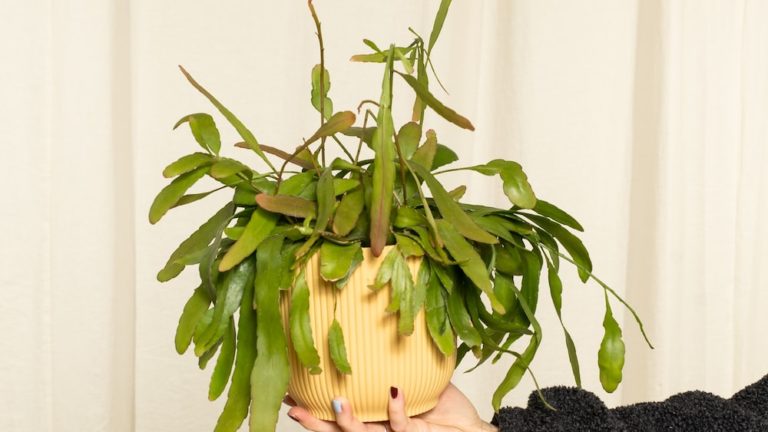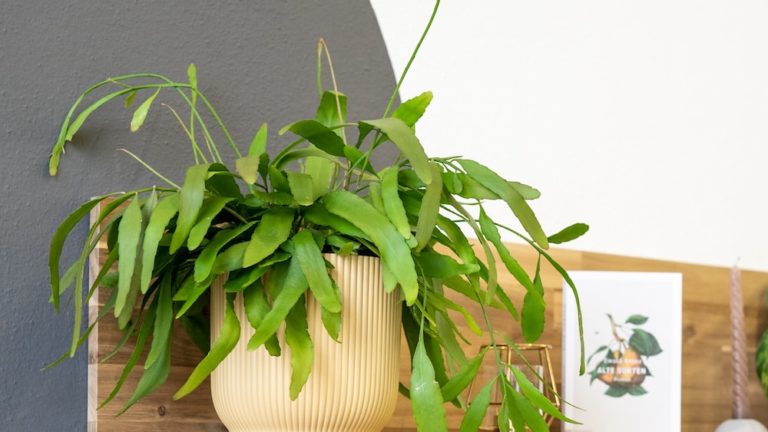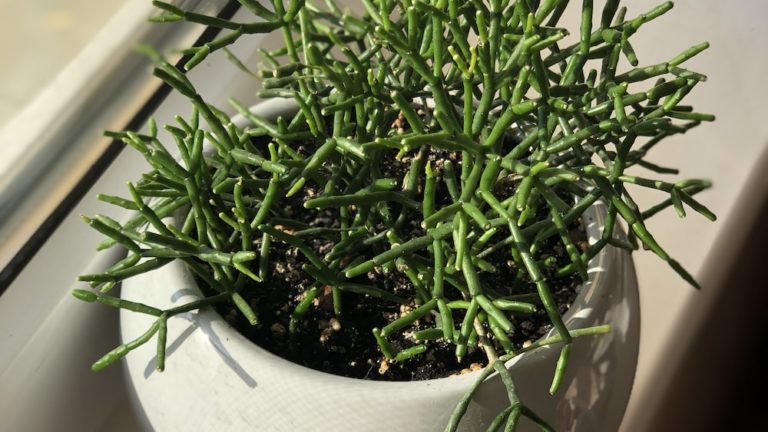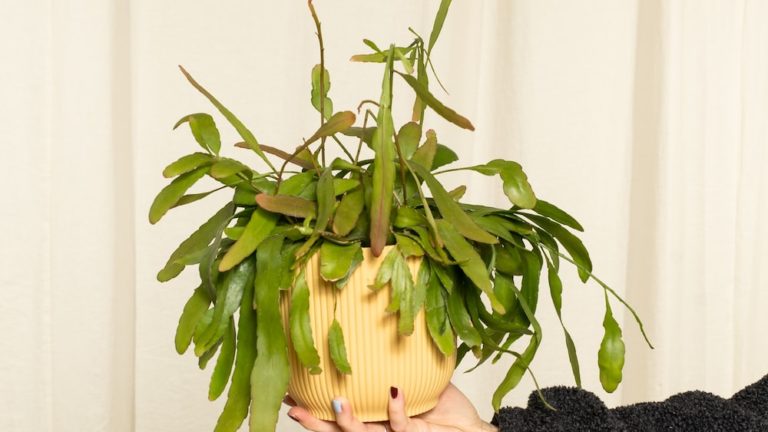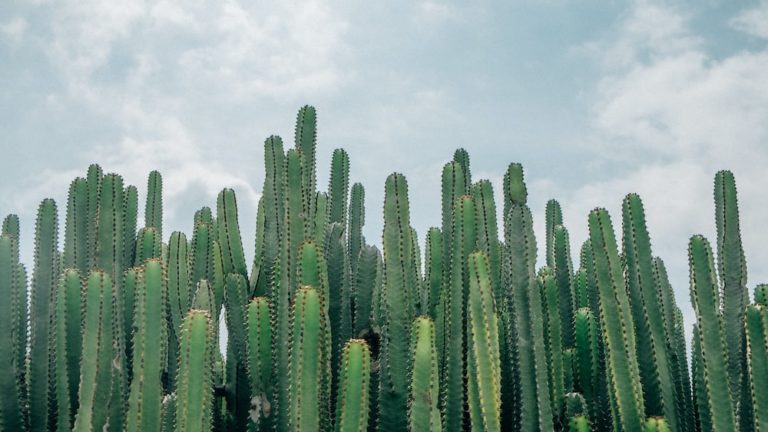Mastering Rhipsalis Cashero Care: The Complete Guide
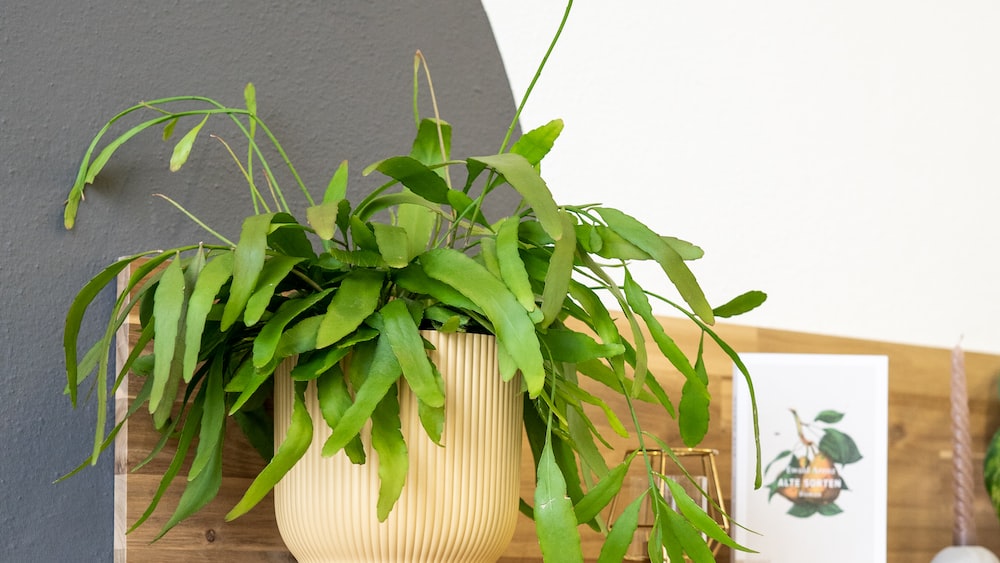
Mastering Rhipsalis Cashero Care: The Complete Guide
Hello fellow nature-lovers and plant aficionados, welcome! Get ready to be whisked away into a spiny and enchanting world that dwells right at the intersection of resilience and beauty: the world of Rhipsalis Cashero. You see, my story with this remarkable plant began on a quiet afternoon. The sun gently warmed my backyard as I found myself lost in the delicate intricacies of yet another succulent – the mistletoe cactus Rhipsalis Cashero.
Isn’t it fascinating how plants can hold such intrigue? They’re silent yet positively teeming with life. They have a quiet, genuine personality. As if each leaf, every spur, all contribute to a narrative entirely unique to that plant. Just like my darling Rhipsalis Cashero, sitting there all nonchalant in my favorite terracotta pot, absorbing the sun’s warm hug. It’s an emblem of tenacious life thriving in even the most challenging climes. Now my dear friend, let’s turn our attention to understanding this enigmatic cactus a little better.
Understanding Rhipsalis Cashero
Deep dive into the realm of Rhipsalis Cashero, you say? Absolutely! Decoding this plant’s characteristics, unearthing its origins, and, most importantly, finding out just how to bring its fresh, verdant personality into your life is a journey worth undertaking.
What is Rhipsalis Cashero?
Ah! The Rhipsalis Cashero, a succulent that soothes the soul with its simplicity, yet bewitches with its fine details. It’s an epiphyte (air plant) from the cactus family that doesn’t quite look like what you’d expect a typical cactus to. This surprise element is what first drew me to it. Rhipsalis plants are known for their long, pendant, often branching stems resembling chenille. But when it comes to the Rhipsalis Cashero, the striking feature is the thin, pencil-like stems that dangle gorgeously from the plant, giving it an air of understated elegance.
Can you envision it? The stems, seemingly lost in a loving embrace, the waxy surface shimmering in the soft sunlight, and the tiny blooms peeking shyly from the lush green. Yes, indeed folks, each Rhipsalis Cashero tells a beguiling tale with its unique silhouette.
The Rhipsalis Cashero captivates with its pencil-like stems, delicate blooms, and enchanting silhouette, making it a plant that tells a beguiling tale.
Origin and Features of Rhipsalis Cashero
Let’s meander through the chronicles of this distinctive plant. The Rhipsalis Cashero hails from the rainforests of Central and South America. Imagine, a slice of the tropical wilderness right in your abode. Isn’t that thrilling? The plant brings along the whimsy of the rainforest with its ellongated, segmented stems and delicate translucent flowers.
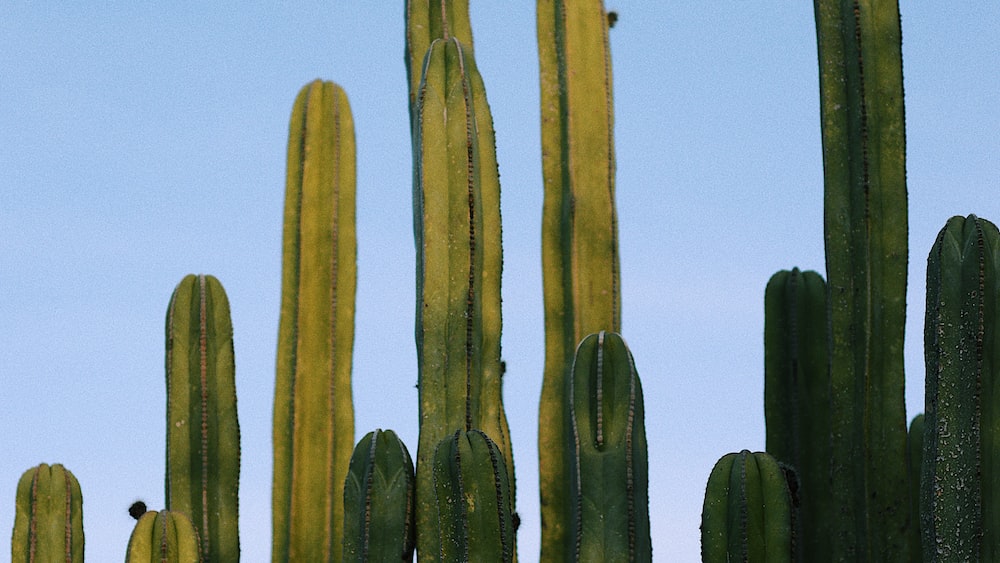
The beauty of these plants, my dear readers, lies in their luscious appeal and whimsical aesthetic, that make them fantastic hanging plants. But it’s not just about appearances–they’re also virtually spineless, which makes handling them effortlessly easy.
How to Grow Rhipsalis Cashero
As we journey together into this exciting world, we’ll learn to cultivate and nurture our very own Rhipsalis Cashero. But fear not, my botanical buddies; this is a dance that’s as joyful as it is enriching.
Ideal Lighting Conditions
Let me let you in on a secret: these plants adore diffused lighting conditions. Imagine our plant gazing dreamily as a sheer curtain filters the sunlight streaming in.
That’s right, Rhipsalis Cashero favors a mixture of soft sunlight and welcoming shade. Although they are adaptable to different lighting conditions, early morning light or late afternoon glows seem to be their preferred ambiances. Remember my friends, too much direct sun exposure may cause sunburn, so let’s keep things gently lit and inviting.
Watering Requirements
Now, to the life force that keeps our darling Rhipsalis Cashero blooming– water. Remember, these cacti are tropical, so they enjoy the occasional quenching.
In summers, it’s best to water when the top inch of the soil has dried out. But beware of overwatering, my friends. During winters, let the soil dry completely before giving our green buddy a good soak. Hint: lukewarm water works wonders.
Selecting the Right Pot
Choosing the right home for your Rhipsalis Cashero is an art. The pot, you see, plays a vital role in maintaining the health of the plant. It’s not just a container; it’s a micro-ecosystem that your plant calls home.
Rhipsalis Cashero prefer shallow pots, for these cacti have fibrous root systems. Opt for a terracotta pot that provides the much needed evaporation of excess water. Ensure it has proper drainage holes, a critical aspect to prevent waterlogging.
Now comes the aesthetic bit. Pair your Rhipsalis Cashero with a hanging pot to truly showcase its long, dangling stems. Imagine it perched by a brightly lit window, the sunlight glinting off the textured terracotta, casting warm hues on the glossy plant within. The picture couldn’t be more perfect.
Choosing the right pot is crucial for maintaining the health of your Rhipsalis Cashero as it provides a micro-ecosystem for the plant, so opt for a shallow terracotta pot with proper drainage holes to prevent waterlogging, and pair it with a hanging pot for an aesthetically pleasing display.
Ideal Soil Conditions
Ah, soil, the very bedrock of our plant’s existence. While usual garden soil might seem to be the default choice, let’s twist the plot for our Rhipsalis Cashero: we’re going for a good-quality, well-draining cacti mix – one that’s rich in organic matter.
After all, it’s this very foundation, this blend of elements, that will lend buoyancy and support to our plant, allowing it to grow happily and healthily. You see, every grain, every granule, constitutes a microscopic world of wonder for our Rhipsalis Cashero. Now wouldn’t that make a happy cactus?
Rhipsalis Cashero Care
There’s a certain comfort in the quiet heartiness of Rhipsalis Cashero. Raising this cactus feels like navigating a delicate partnership, a dance of love and learning between you and the surreal, suspended charm of these floating cacti.
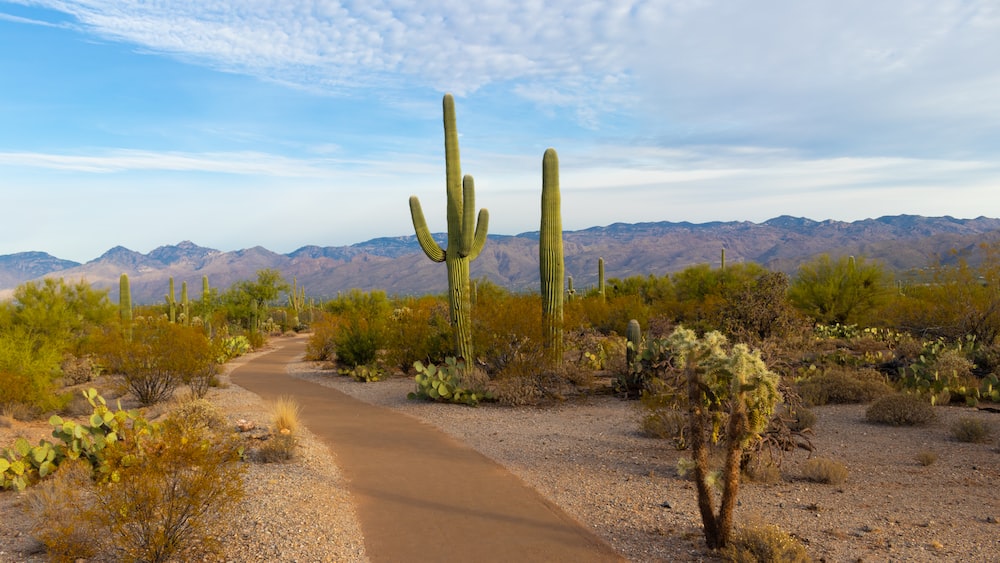
Fertilizing Your Rhipsalis Cashero
The key to aiding your Rhipsalis Cashero’s flourishing is a conscientious fertilization routine. Remember, this cactus isn’t a needy companion, but it cherishes the moments of care you provide. They are little moments of marvels, undulating under the touch of your tender commitment.
Let’s embark on this incredible journey of fertilizing your Rhipsalis Cashero. Prefer using a balanced liquid houseplant fertilizer, ideally at half strength. You see, this plant is as humble as they come. It asks for nothing ostentatious, just a quiet support system to enhance it’s natural sturdiness. Be sure to fertilize them only during the growing seasons, more or less every 4 weeks. They look forward to these intervals, like small gatherings under the welcoming warmth of your care.
When the colder months arrive and your Rhipsalis Cashero quietly shrinks within itself, curb the use of fertilizer. Take this as a period of rest for your resilient cacti friend, where it’s requesting a gentle pause in the usually welcomed bustle of nurturing.
Understanding Humidity Requirements
You see, my Rhipsalis feel most at home in places mirroring their rainforest origins. They crave the caress of humidity in the air, a moist whisper rekindling homesickness for tropical forests.
A level of around 50% humidity is ideal for their growth. Be mindful though, don’t drown them in dampness, they enjoy the soft moistness, not the overpowering douse of wetness. Balancing this crucial aspect can be the difference between a gloriously thriving Rhipsalis Cashero and a sorry scenario. Remember, they’ve entrusted their survival to your hands.
Repotting Your Rhipsalis Cashero
The prospect of repotting can be daunting, the uncertainty casting long shadows across your bond with these cacti. But don’t fret, for it’s a journey you shall embark together, and emerge, with your companionship stronger than ever.
Repotting is a rite of passage for your Rhipsalis Cashero. It’s like it’s stepping beyond the marital boundaries of its pot, lovingly transitioning into a new era of growth and maturity. A general rule of thumb: aim to repot your Rhipsalis Cashero when the roots have mastered their current habitat, hungry for fresh experiences.
What you need for the venture is the right pot, a pot that is cosy yet spacious, a pot that would promise them their dreams while ensuring a nurturing surrounding. And then, choose the potting mix, the ultimate nutrient-rich foundation to support their audacious growth.
Rhipsalis Cashero Propagation
For cacti lovers like us, there can be no greater joy than successfully nurturing a new life, right from the seedling to a robust existence. Propagating Rhipsalis Cashero, in essence, is this level of fulfillment, all bundled in a wondrous journey.
Steps to Propagate Rhipsalis Cashero
The propagation of Rhipsalis Cashero is as simple as it is gratifying. Begin by choosing a healthy stem segment and cut a piece that is around 3 inches long. Allow it to dry for a few days. This process, known by the exotic name of “callousing”, is essential to ensure the fresh wound on the stem does not rot.
Once the wound has calloused, plant this cutting in a pot with fresh, well-draining soil. With the rustling leaves above, the cutting will find a new home, a fresh beginning, promising a future where it will stand tall, blooming with vigor and life.
Propagating Rhipsalis Cashero involves cutting a healthy stem segment, allowing it to dry, and then planting it in well-draining soil for a fresh start and a promising future.
Common Propagation Mistakes to Avoid
Propagation might come with its pitfalls. Hurrying the process, not allowing the cut to callous properly, overwatering the fresh cut, or placing them in direct sunlight and heat, are all acts of overzealous affection that can hinder their path to splendid growth. These are like love notes, too hastily penned, spoiling the rhythm of intimacy.
Rhipsalis Cashero and Pets
When you are a lover of both cacti and cuddly pets, a prime concern is ensuring the compatibility of both.
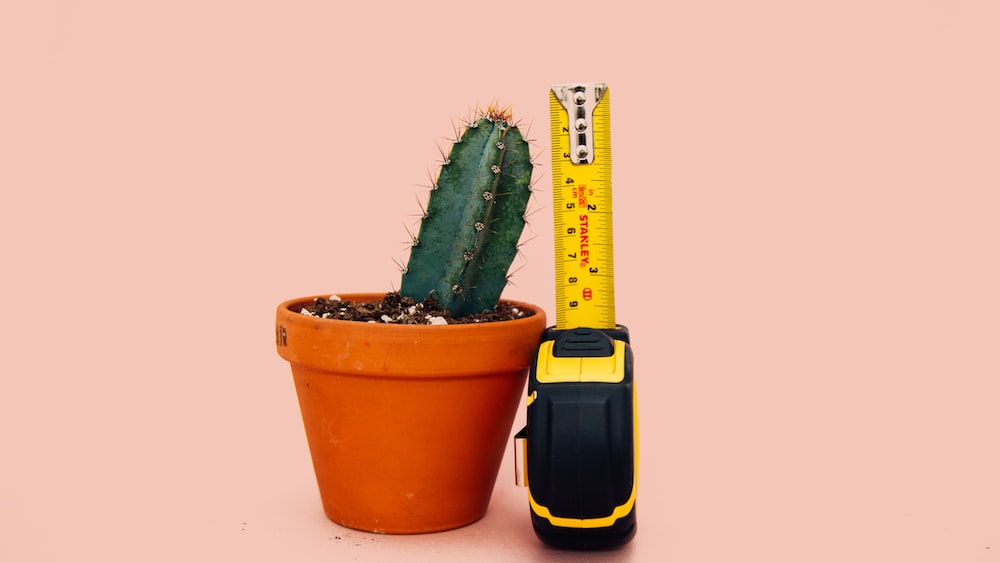
Is Rhipsalis Cashero Toxic to Cats and Dogs?
The good news for this unusual family – it’s a match. Rhipsalis Cashero are non-toxic to furred friends. However, exercise a level of caution. The spines might not be toxic, but they sure can be prickly and uncomfortable for your unsuspecting pets. So, I propose, let’s create spaces where the love for both can grow without breaching the comfort of any.
Dealing with Plant Pests
To foster rhipsalis cashero to its full opulence, it is imperative to be observant and proactive in dealing with plant pests. Like battling an army of unseen marauders, taking care of these special cacti species demands a sense of alertness and readiness.
Common Pests in Rhipsalis Cashero
Just like any other plant, rhipsalis cashero can attract a variety of pests. The most common culprit is mealybugs, these tiny white parasites that perch themselves on stems, feeding off the plant’s succulence. As they feast, they excrete a sticky substance called honeydew which attracts sooty mould and degrades the plant’s appearance.
Next in line is the infamous spider mite, nearly microscopic mites that revel in sucking the sap causing the foliage to turn yellow and eventually drop off. Last but alarming are scale bugs, aptly named due to the scale-like protective shield they develop around themselves. They puncture the plant tissues and siphon off the plant’s precious nutrients.
While these pests may seem small, their population can explode if given the chance, causing severe harm to your beloved rhipsalis cashero. However, take a hefty sigh of relief, dear reader, for there are ways to combat these invaders.
How to Treat Pests in Rhipsalis Cashero
Engaging in battle against these pests may seem daunting, yet rest assured that with the right strategy, rhipsalis cashero has a fighting chance. An initial action involves isolating the affected plant to prevent the pests from spreading to other stock.
Subsequently, a thorough but gentle shower might help wash off these unwelcome guests. If the infestation persists, considering using a natural or organic pesticide might be the next best step. Ensure to follow the manufacturer’s instructions closely to avoid causing direct harm to the plant itself.
FAQs
1. How often should I water my Rhipsalis Cashero?
In regards to watering your rhipsalis cashero, it greatly depends on the environment and the plant’s stage of growth. Typically, during the growing season, watering should be done when the soil feels dry to the touch.
2. Can Rhipsalis Cashero grow in low light conditions?
As for the light conditions, rhipsalis cashero is a species that adapts well to a variety of light settings. However, it grows best in bright, indirect light. It can tolerate low light but might not thrive as well.
3. How to propagate Rhipsalis Cashero successfully?
To propagate rhipsalis cashero successfully, the key is to take healthy stem cuttings, let them dry out for a few days to prevent rotting, and then plant them in well-draining cactus mix.
4. Is Rhipsalis Cashero safe for my pets?
Safety is vital, especially if you have fluffy companions around. The good news is, rhipsalis cashero is non-toxic to both cats and dogs. However, any plant could cause an upset stomach if ingested in large quantities.
Conclusion
In the dance of tending to rhipsalis cashero, every move counts, from watering, dealing with pests, providing the right light conditions, to selecting the right soil and pot. A mindful dance that requires one to be patient and gentle, yet alert and decisive when need be.
Caring for these cacti is a constant education – a unique journey where you learn to tune in to their language, understanding their needs and dancing to their rhythm. And in the process, you’re not just growing rhipsalis cashero, but you’re growing alongside them, learning the rhythm of life, its simplicity and complexity, its resilience, and its vibrant beauty.
As we bid our farewell, let me share a favorite quote, “Plants do not grow merely to satisfy ambitions or to fulfill good intentions. They thrive because someone expended effort on them.” It encapsulates the essence of what we’ve explored. Every small act of care you invest in your Rhipsalis Cashero is a step towards its thriving existence. Until the next time we explore another facet of the vast garden of knowledge, keep growing, and never let the soil of love for plants go barren.
With warmth and tender green thumbs, Sophia.

